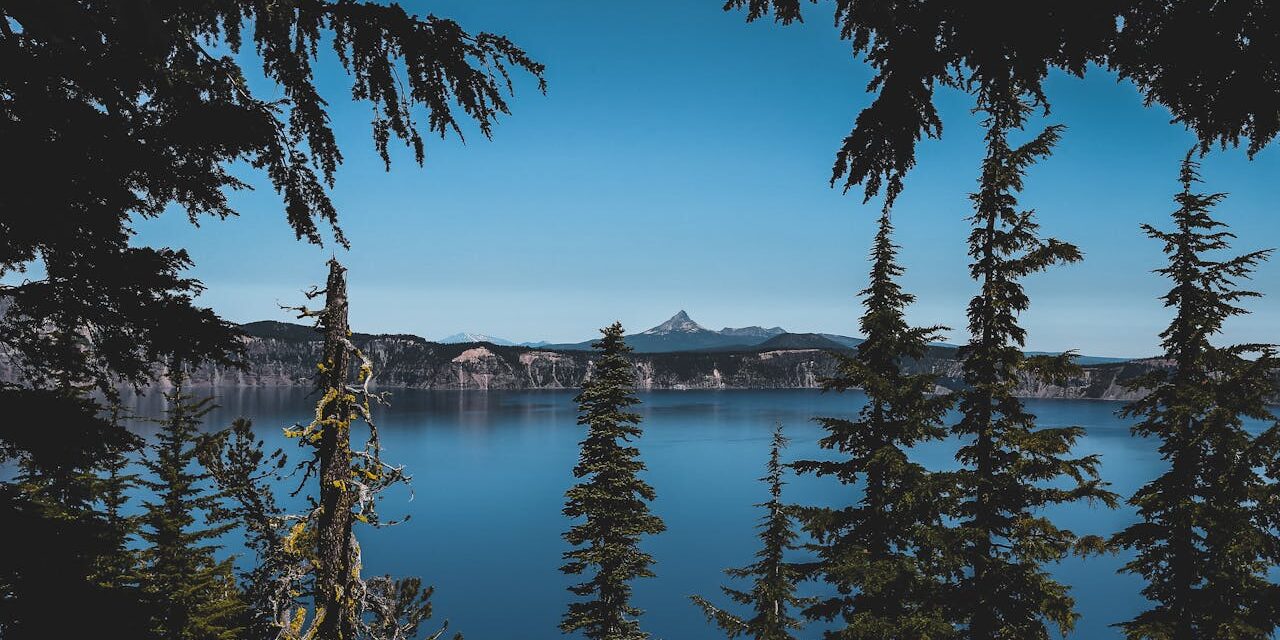Oregon, known as the “Beaver State,” has a rich and diverse history influenced by its indigenous cultures, European exploration, and significant events in American expansion and development.
From the early Native American tribes to its statehood and beyond, Oregon’s history is a fascinating journey of exploration, settlement, and growth.
Below, we explore the history of Oregon, highlighting its foundation, major historical events, and notable landmarks.
Table of Contents
Early History
Indigenous Inhabitants and European Exploration
Oregon was originally inhabited by numerous Native American tribes, including the Chinook, Tillamook, Nez Perce, and Klamath.
- These tribes developed complex societies with rich cultural traditions, seasonal agriculture, and extensive trade networks.
- Archaeological discoveries, such as those made by Luther Cressman in the 1930s, have shown that human habitation in Oregon dates back over 13,000 years.
The indigenous peoples established a deep connection with the land long before European explorers arrived.
Early European Exploration
The first Europeans to explore Oregon were Spanish sailors in the mid-16th century.
- Spanish explorers such as Juan Rodríguez Cabrillo and later English explorers like Sir Francis Drake charted parts of the Oregon coast.
- The British explorer James Cook visited the Oregon coast in 1778, further increasing European interest in the region.
These early explorations paved the way for more detailed mapping and eventual settlement by Europeans.
Territorial Period and Settlement
The Oregon Trail and American Settlement
The Oregon Trail was a significant route for American settlers in the mid-19th century.
- The trail facilitated the westward expansion of the United States, with thousands of pioneers traveling to Oregon in search of fertile land and new opportunities.
- The Provisional Government of Oregon was established in 1843, providing a framework for governance until formal territorial status was granted.
The Oregon Trail played a super crucial and central role in the settlement and development of the region.
Oregon Territory and Statehood
Oregon became an official U.S. territory in 1848 and achieved statehood on February 14, 1859, becoming the 33rd state in the Union.
- The Oregon Treaty of 1846 resolved the boundary disputes between the United States and Britain, establishing the 49th parallel as the northern boundary.
Statehood marked a new era of political stability and growth for Oregon.
Key Historical Events
The Gold Rush and Economic Growth
The discovery of gold that happened in the 1850s attracted thousands of miners to Oregon, boosting the economy and accelerating settlement.
- Mining towns sprang up, and the influx of settlers led to the development of infrastructure and local governments.
The gold rush significantly impacted Oregon’s economic landscape.
Industrialization and the Timber Industry
In the late 19th and early 20th centuries, Oregon’s economy diversified with the growth of the timber industry.
- The state’s vast forests became a valuable resource, leading to the establishment and creation of numerous sawmills and timber companies.
The timber industry remains a vital part of Oregon’s economy today.
Notable Landmarks
Crater Lake National Park
Crater Lake, created and formed by the collapse of a volcano, is the deepest lake in the United States and a major natural landmark.
- The park offers and gives stunning views, hiking trails, and a rich natural history.
Crater Lake National Park is a strong testament to Oregon’s natural beauty.
Fort Clatsop
Fort Clatsop, located near the mouth of the Columbia River, was the winter encampment of the Lewis and Clark Expedition in 1805-1806.
- The site is now a super wonderful national historical park, preserving the history of this significant expedition.
Fort Clatsop highlights Oregon’s role in early American exploration.
The Oregon State Capitol
Located in Salem, the Oregon State Capitol is a hub of state government and an architectural landmark.
- The building features distinctive art deco design and houses the offices of the lead governor and the state legislature.
The state capitol is a symbol of Oregon’s governance and history.
Governance
State Government
Oregon operates under a constitution adopted in 1859.
- The state government comprises the Executive, Legislative, and Judicial branches.
- The governor, currently Tina Kotek, leads the executive branch.
The state government addresses the needs of Oregon’s diverse population and manages its resources effectively.
Local Government
Oregon’s local government structure includes counties, cities, and towns.
- Each level of government is responsible for services such as education, public safety, and infrastructure.
- Local governance ensures that the diverse needs of Oregon’s communities are met.
Effective local governance contributes to the overall well-being of the state’s residents.
Demographics and Growth
Population
As of 2023, Oregon’s population was approximately 4.27 million. The state’s demographic makeup reflects its history of immigration and cultural diversity.
Diverse demographics and steady growth reflect Oregon’s appeal as a place to live and work.
Education and Economy
Oregon is home to several prominent educational institutions, including the University of Oregon and Oregon State University.
- The state’s economy is diverse, with key sectors including technology, agriculture, and tourism.
- Oregon also has a growing renewable energy sector, contributing to its economic resilience.
These factors contribute to the state’s economic vibrancy and innovation.
State of Oregon Q&A
Q: When did Oregon become a state?
A: Oregon was admitted to the Union as the 33rd state on February 14, 1859.
Q: Who were the original inhabitants of Oregon?
A: The original inhabitants of Oregon included various Native American tribes such as the Chinook, Klamath, and Nez Perce. These tribes had established societies with rich cultures and trade networks.
Q: What role did Oregon play in westward expansion?
A: Oregon was a significant destination during the westward expansion, particularly through the Oregon Trail. The region attracted many settlers due to its fertile land and abundant resources.
Q: What are some notable historical landmarks in Oregon?
A: Notable landmarks include Crater Lake National Park, Fort Vancouver National Historic Site, and the Oregon Trail Interpretive Center. These sites highlight Oregon’s natural beauty, historical significance, and cultural heritage.
Q: How is Oregon governed?
A: Oregon operates under a constitution adopted in 1859, with an Executive, Legislative, and Judicial branch. The governor leads the executive branch, and local governance is managed by counties, cities, and towns.
Q: What is the current population of Oregon?
A: As of 2023, Oregon’s population was approximately 4.27 million. The state continues to attract residents with its diverse culture, educational opportunities, and economic resilience.
Oregon’s rich history and commitment to cultural preservation make it a unique and vibrant state. By protecting its historical landmarks and fostering growth across various industries, Oregon honors its past while looking forward to a prosperous future.





